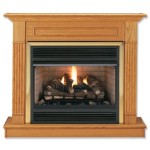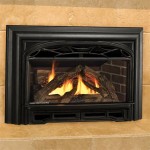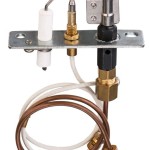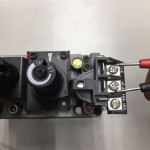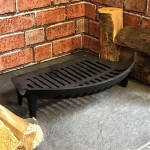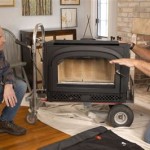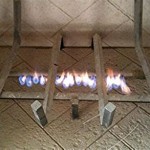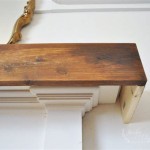Revitalizing Your Hearth: A Comprehensive Guide to Painting Tile Fireplaces
Fireplaces serve as focal points in many homes, radiating warmth and contributing significantly to the interior aesthetic. However, outdated or unattractive tile surrounding the fireplace can detract from its overall appeal. Painting the tile offers a cost-effective and relatively straightforward solution to refresh the fireplace and harmonize it with the existing decor. This guide provides a comprehensive overview of the process, covering preparation, paint selection, application techniques, and maintenance considerations.
Before embarking on a painting project, a thorough assessment of the existing tile is crucial. Identifying the type of tile, its condition, and any existing coatings will inform the subsequent steps. Glazed tiles, for instance, require different preparation techniques compared to unglazed tiles. Similarly, tiles with cracks or chips may necessitate repairs before painting to ensure a smooth and durable finish.
Understanding Tile Types and Their Impact on Paint Adhesion
Tile materials vary significantly in their porosity and surface characteristics, directly influencing the paint adhesion. Ceramic and porcelain tiles are commonly found in fireplaces due to their durability and heat resistance. However, their smooth, glazed surfaces present a challenge for paint to properly adhere. Unglazed tiles, such as terracotta or natural stone tiles, offer a more porous surface that readily accepts paint.
The presence of a glaze necessitates more rigorous preparation to create a suitable bonding surface. Acid etching or the application of a bonding primer designed for glossy surfaces are common techniques used to improve paint adhesion on glazed tiles. Neglecting this step often results in paint peeling or chipping over time, diminishing the aesthetic result and requiring rework.
When dealing with natural stone tiles, it's essential to identify the specific type of stone. Certain stones, such as slate, are more porous and may require sealing before painting to prevent excessive paint absorption. Other stones, like granite, may be highly polished and require similar preparation methods as glazed ceramic or porcelain tiles.
Essential Preparation Steps for a Successful Paint Job
Proper preparation is arguably the most critical stage in painting tile fireplaces. These initial steps determine the longevity and appearance of the finished project. A meticulous approach to cleaning, repairing, and priming will significantly enhance the paint's adhesion and durability.
The first step involves thoroughly cleaning the tile surface. Remove any dust, grime, soot, or grease using a degreasing cleaner and a scrub brush. Pay particular attention to grout lines, as they tend to accumulate dirt. Rinse the tiles thoroughly with clean water and allow them to dry completely. Avoid using abrasive cleaners that could scratch the tile surface.
After cleaning, inspect the tiles for any cracks, chips, or loose grout. Repair any damage using appropriate patching compounds or grout. Allow the repairs to cure completely according to the manufacturer's instructions. Sand down any rough edges or uneven surfaces to create a smooth and uniform base for painting. Using an appropriate filler will help to seamlessly integrate repairs into the tile surface.
The next crucial step is applying a bonding primer. Choose a primer specifically designed for use on tile or glossy surfaces. These primers contain ingredients that promote adhesion and prevent paint from peeling. Apply the primer evenly using a brush or roller, following the manufacturer's instructions. Allow the primer to dry completely before proceeding to the next step. Some primers may require multiple coats for optimal adhesion.
For tiles with particularly smooth or glossy surfaces, consider acid etching. This process involves applying a mild acid solution to the tile surface to create microscopic pores that enhance paint adhesion. Always wear appropriate safety gear, including gloves and eye protection, when working with acid etchants. Follow the manufacturer's instructions carefully and rinse the tiles thoroughly after etching.
Selecting the Right Paint for Fireplace Tiles
Choosing the right type of paint is crucial for a successful and long-lasting finish on fireplace tiles. Not all paints are suitable for the heat and moisture conditions associated with fireplaces. Selecting a durable, heat-resistant paint specifically designed for interior use is essential.
High-heat paints, typically used for stoves and grills, are often considered for fireplace surrounds. While these paints are heat-resistant, they may not offer the desired aesthetic qualities or color options. Additionally, some high-heat paints are not designed for use on ceramic or porcelain tiles.
Acrylic latex paints are a popular choice for interior applications due to their durability, water resistance, and ease of application. However, standard acrylic latex paints may not withstand the high temperatures generated by a fireplace. Look for acrylic latex paints specifically formulated for use on high-traffic areas or surfaces that are exposed to heat. These paints typically contain additives that enhance their heat resistance and durability.
Epoxy paints offer exceptional durability and chemical resistance, making them a suitable option for fireplace tiles. Epoxy paints create a hard, durable finish that is resistant to scratches, chips, and stains. However, epoxy paints can be more challenging to apply than acrylic latex paints, requiring careful mixing and application techniques. Additionally, epoxy paints may have a strong odor during application, requiring adequate ventilation.
Consider using a paint with a matte or satin finish for fireplace tiles. These finishes tend to be more forgiving and less reflective than glossy finishes, hiding imperfections and creating a more subtle and elegant appearance. Glossy finishes can also accentuate any unevenness in the tile surface.
Application Techniques for Professional-Looking Results
The application technique significantly impacts the final appearance and durability of the painted fireplace tiles. Employing proper brushwork, roller techniques, and layering methods ensures an even and professional-looking finish.
Start by applying paint to the grout lines using a small brush. This ensures that the grout lines are fully covered and prevents them from showing through the paint layers. Use short, even strokes and avoid applying excessive pressure, which could cause the paint to bleed onto the tile surface.
For the tile surfaces, use a high-quality brush or roller designed for smooth surfaces. Apply the paint in thin, even coats, working in one direction. Avoid applying excessive paint, which can lead to drips or runs. Allow each coat to dry completely before applying the next coat.
Depending on the paint type and color, two or three coats may be necessary to achieve full coverage and a uniform finish. Lightly sanding the surface between coats can help to smooth out any imperfections and improve the adhesion of subsequent coats. Use fine-grit sandpaper and wipe away any dust with a tack cloth before applying the next coat.
Consider using painter's tape to mask off any areas that you don't want to paint, such as the fireplace surround or the adjacent wall. This will help to create clean, crisp lines and prevent paint from getting onto unwanted surfaces. Remove the painter's tape carefully after the final coat of paint has dried completely.
Maintaining Your Painted Tile Fireplace
Proper maintenance is essential for preserving the appearance and longevity of your painted tile fireplace. Regular cleaning and prompt attention to any damage will help to keep your fireplace looking its best for years to come.
Clean the painted tiles regularly with a mild soap and water solution. Avoid using abrasive cleaners or harsh chemicals, which could damage the paint finish. Use a soft cloth or sponge to wipe down the tiles and rinse them thoroughly with clean water. Dry the tiles with a clean towel to prevent water spots.
Inspect the painted tiles regularly for any signs of damage, such as chips, scratches, or peeling paint. Repair any damage promptly to prevent it from spreading. Use a touch-up paint to cover any small chips or scratches. For larger areas of damage, consider re-priming and painting the affected area.
Avoid placing hot objects directly on the painted tiles, as this could damage the paint finish. Use a fireplace screen to protect the tiles from sparks and embers. Consider applying a protective sealant to the painted tiles to enhance their durability and water resistance.
By following these guidelines, homeowners can transform their outdated or unattractive tile fireplaces into stunning focal points that enhance the overall aesthetic of their homes. Careful planning, proper preparation, and diligent maintenance are the keys to achieving a long-lasting and visually appealing result.

How To Paint A Tile Fireplace Amber Simmons

How To Paint Tile Easy Fireplace Makeover Setting For Four Interiors

How To Paint A Tile Fireplace Des And Sses

How To Paint Tile Easy Fireplace Makeover Setting For Four Interiors

How To Paint Fireplace Tile Diy Makeover A Blossoming Life

How To Paint A Tile Fireplace Amber Simmons

How To Paint Fireplace Tile Easy Home Update Allisa Jacobs

Stenciled Faux Tile Fireplace Tutorial East Coast Creative

How To Paint Fireplace Tile Diy Makeover A Blossoming Life

How To Paint Tile Easy Fireplace Makeover Setting For Four Interiors

